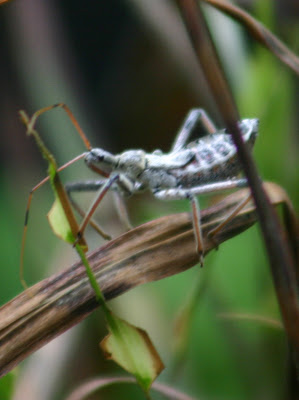
Recipes adapted from Better Homes and Gardens:
Lemon Ice Cream with Strawberry Sauce
Prep: 20 min.
Chill: 4 hrs.
Freeze: according to manufacturer directions
Ingredients
* 5 to 6 lemons
* 2 cups milk
* 1-1/4 cups granulated sugar
* 1/4 tsp. salt
* 12 egg yolks
* 2 cups whipping cream
* Strawberry Sauce (see recipe)
Directions
1. Finely shred 2 tablespoons peel from lemons. Squeeze juice to equal 3/4 cup. Set aside peel; cover and refrigerate juice.
2. In small saucepan heat milk over medium heat just until tiny bubbles begin to appear around the edge of the saucepan.
3. In large saucepan whisk sugar, salt, and lemon peel into egg yolks until well blended. Gradually whisk in warmed milk. Cook and stir continuously with a wooden spoon or heatproof rubber spatula over medium heat until mixture thickens and coats the back of a clean metal spoon, about 15 minutes (do not boil). Remove pan from heat. Transfer mixture to large bowl. Quickly cook by placing the bowl of custard in a very large bowl of ice water for about 5 to 7 minutes, stirring constantly. Once completely cool, stir in whipping cream. Cover and chill 4 to 24 hours.
4. Just before freezing stir in lemon juice. Strain through fine-mesh strainer; discard peel. Freeze in 4- or 5-quart ice cream freezer according to manufacturer's directions. If desired, ripen 4 hours. Serve with Blueberry Sauce. Makes about 7 cups. Each 1/2-cup serving.
Strawberry Sauce: In saucepan combine 1/3 cup sugar, 1/2 teaspoon cornstarch and 1/4 teaspoon salt; stir in 1/4 cup water and 1 teaspoon lemon juice and mix well. Add 2 cups fresh strawberries stems removed and quartered. Cook over medium heat, stirring often, until mixture is slightly thickened and bubbly. Cook and stir 2 minutes more.
Transfer to bowl; cool. Serve at room temperature. Or cover and refrigerate 1 hour or up to 2 days. If chilled, let stand at room temperature 30 minutes before serving. Makes 2 cups.
Cornmeal Sandies
Prep: 30 min.
Chill: 2 min.
Bake: 10 min. per batch
Cool: 2 minutes per batch
Stand: 2 minutes per batch
Ingredients
* 1 cup butter, softened
* 1/4 cup sugar
* 3 tsp. finely shredded orange peel
* 2 tsp. finely shredded lemon peel
* 1 tsp. vanilla
* 1-1/2 cups unbleached all-purpose flour
* 1/2 cup yellow cornmeal
* 1/4 tsp. salt
* Sugar
Directions
1. Preheat oven to 350 degrees F. Line baking sheets with parchment paper. Set aside.
2. In large mixing bowl beat butter with electric mixer on medium to high speed for 30 seconds. Beat in the 1/4 cup sugar, and fruit peels; beat in vanilla.
3. In separate bowl combine flour, cornmeal, and salt; gradually add to and mix with butter mixture until a cohesive ball of dough forms.
4. Using a 1-ounce scoop or tablespoon, roll dough in 3/4-inch balls. Place 1 inch apart on prepared baking sheets. Flatten slightly with palm of hand.
5. Bake 10 to 12 minutes, until edges are lightly browned. Cool 2 minutes on baking sheet. Place additional sugar in shallow dish; gently toss warm cookies in sugar. Cool on rack. Makes 3 dozen cookies.
























